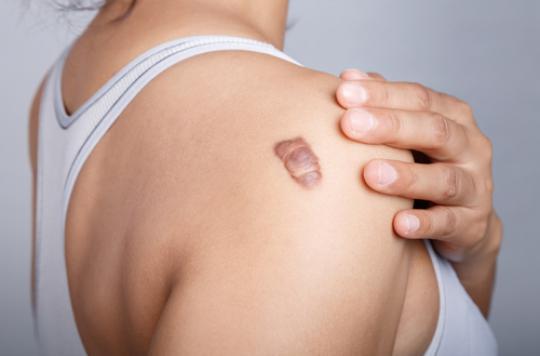Researchers have succeeded in modifying the process of skin regeneration. A discovery that could help prevent scar formation.

Scars may soon be a thing of the past. Researchers report having succeeded in removing these traces which imprint the skin indelibly. Their work, conducted by the University of Pennsylvania, has been published in the journal Science.
By successfully transforming myofibroblasts (the characteristic cells of scar tissue) into adipocytes (fat cells that are absent from scars), scientists were able to obtain a scar area close to the skin, and with hair.
Keloid cells
“We thought myofibroblasts couldn’t turn into another type of cell,” said Dr. Cotsarelis, head of the Department of Dermatology at the University of Pennsylvania. However, our work shows that they can, and in a stable way, be converted into adipocytes ”
The work was carried out on rodents, but also on a line of human keloid cells, in vitro. Keloid scar is a particularly unsightly form of scar, resulting from an outgrowth of the dermis at a healed wound. It is manifested by a raised scar.
The role of a protein
This work was made possible thanks to the observation of the process of regeneration of the skin after an injury. The literature had already highlighted the role of a protein, which transmits a signal via the hairs to rebuild the skin. This time, the team discovered that the bone morphogenetic protein – BMP produced by the follicles – made it possible to transform myofibroblasts into fat cells (adipocytes).
“We were able to manipulate the healing process of a skin lesion so that it leads to skin regeneration, not to scarring,” the team added. These results, if they prove to be replicable, could have important repercussions in aesthetic and dermatological medicine (burns, scars, etc.) but also for patients with AIDS, who are subject to the loss of fat cells, the authors point out. .
.
















